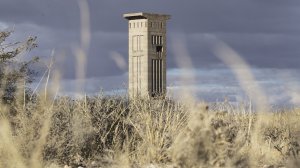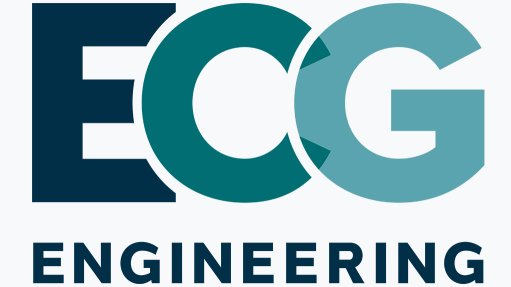Prieska copper/zinc project, South Africa – update


Name of the Project
Prieska copper/zinc project.
Location
In the Northern Cape, in South Africa.
Project Owner/s
Diversified metal explorer and developer Orion Minerals.
Project Description
An updated bankable feasibility study (BFS) has confirmed the potential of Prieska to underpin a significant near-term, low-cost, copper/zinc development project, with exceptional opportunities for future growth.
The updated BFS on the foundation phase of the project proposes the development of a new 2.4-million-tonne-a-year copper/zinc mining operation at the brownfield project.
Underground and surface mining methods are planned to be used in conjunction with conventional froth-flotation concentration to produce differentiated copper and zinc concentrates for export.
Peak production is estimated at 23 000 t/y of copper and 88 000 t/y of zinc.
The life-of-mine (LoM) has been extended by two years, from 9.7 years to 11.5 years.
Material changes in the updated BFS, compared with the 2019 BFS plan, include:
- reducing the mine dewatering timeline and supplementing the treatment of that water,
- incorporating additional mineral resources into the mining plan that will increase the mine life by two years,
- a more conservative timeline to ramp up to steady-state production,
- prioritising the early mining of high-grade zones in the mining sequencing,
- the adoption of semiautogenous grinding mills in the processing flowsheet,
- an owner-miner operating philosophy for underground mining,
- using an experienced contractor to operate the processing plan, and
- a change in the key operational infrastructure being supplied by third-party financing and in the supply of select key operational infrastructure.
The mining methods for the project remain unchanged, compared with those stated in the 2019 BFS. Tunnel development remaining from the previous mining operations allows for early access to underground production mining areas. A combination of longhole open stoping with fill and drift-and-fill mining methods are planned to be used, supported with paste backfill.
Potential Job Creation
Not stated.
Net Present Value/Internal Rate of Return
The project has a net present value, at an 8% discount rate, of A$779-million, compared with A$574-million in the 2019 BFS, and an internal rate of return of 39%, compared with 38% in the 2019 BFS. Payback from first production is estimated at 2.4 years, a decrease of five months.
Capital Expenditure
Total startup capital, including contingency, has decreased from A$400-million in the 2019 BFS to A$373-million in the updated BFS.
Peak funding requirements have increased from A$378-million in the 2019 BFS to A$413-million.
Planned Start/End Date
Orion Minerals is targeting production startup in 2024, market conditions permitting.
Latest Developments
Market researcher S2 Research has published an updated valuation for Orion Minerals at R1.16, or A$0.11, a share, compared with its current share price valuations of R0.34, or A$0.03.
The professional market research provider says Orion’s Prieska copper/zinc mine project is valued at about R8.5-billion after tax – a 21% increase on the evaluation. Of this, about R6.6-billion is attributable to shareholders.
S2’s evaluation follows Orion’s announcing on January 20 that it will start a six-month technical investigation to optimise the LoM plan of the Prieska project.
Specifically, the study will assess the potential for early access of the openpit material (+105 Level Supergene orebody) and the mineralised remnant geotechnical pillars left in situ.
Unpacking Orion’s latest project optimisation plans, S2 says there are substantial benefits for shareholders, based on this new mine plan, including early access to cash flows from openpit and pillar mining, reduced total capital expenditure (capex) on account of a smaller tailings storage facility (TSF) and reduced upfront capex.
S2 says reduced peak funding eases debt funding pressures and reduces the assumed equity raises.
The Orion technical study will investigate mining the openpit +105 Orebody at 100 000 t a month from month 19 to 32, instead of at the end of the so-called Deeps – Foundation Stage, which brings production forward by about 14 months.
The associated drilling programme is aimed at upgrading the +105 Level resources in support of the new mine plan.
Currently, only 484 000 t of the 1.7-million tonnes of declared resources for the +105 Orebody have been upgraded to reserves. An underground drilling programme, starting later in February, is aimed at upgrading more of these resources, pursuant to the accelerated mining plan.
The programme will also confirm the position and dimensions of the mined-out voids below the pit shell that will require backfilling ahead of the openpit extraction.
Subject to the success of the technical study, the +105 Level openpit project is to be brought forward and executed during the initial capital stage, specifically during the lead time of the underground dewatering and development activities.
Meanwhile, the drilling programme also serves to prove up resources available from the remnant geotechnical pillars left behind by the previous mine operator. More than two years of full production is estimated to be tied up in these pillars.
It is estimated that about 20% of the original orebody was left behind by the previous owners who relied on geotechnical pillars without backfill for underground support. S2 suggests that up to nine-million tonnes of in situ material could be present that is not currently in the mining plan, which should translate to a 5.4-million-tonne reserve and add about two years of full production.
The market researcher assumes that production from pillar mining will replace production from the depleted +105 Orebody from month 29 and up to month 45, at which point production from the Deeps will start to ramp up.
First concentrate production from the Deeps orebody is now expected to ramp up from the end of Year 4, instead of the end of Year 3.
Discussing the resultant benefits from Orion’s new mine plan considerations, S2 says the planned dewatering programme can be extended over a longer timeframe, as well as reduce the capacity of the TSF.
The dewatering programme for the main shaft was scheduled to run from month eight to month 22. The underground construction was due to start in month 21 in anticipation of mining and shaft hoisting in month 27.
With early access to the +105 Orebody and the ability to mine from the remnant pillars, the shaft dewatering programme is no longer a critical path element to first production.
Dewatering is now considered over a longer period with modular plant increases as required, consequently reducing the upfront capital. An initial water treatment plant, at a third of original design capacity, is being considered for Year 1. This will have a related reverse osmosis circuit to produce agricultural-use water and an effluent storage dam for mine use water.
One benefit of this arrangement is that water pumped out of the shaft can be available for mine use contemporaneously at a volume that can be largely absorbed by mineral processing, mine back-filling and agricultural offtake as production ramps up, reducing the need for evaporation.
Originally, the TSF was a critical capex element to provide evaporation during dewatering; this will no longer be the case.
Once mineral processing starts, tailings will be directed towards back-filling below the +105 Level orebody pit shell and into the voids associated with targeted remnant pillars on the upper levels. Much lower volumes of tailings will now need to report to the TSF, further reducing the TSF design capacity requirements.
With less evaporation and reduced unallocated tailings volumes than originally envisaged, the need for a large TSF as a critical path element is alleviated.
For the updated model, S2 has assumed that the TSF will be much reduced in scale and reduce the estimated capital cost by almost 50%, from $21-million to $11-million.
The market researcher has also assumed that the overall cost of the modular water treatment plant and effluent dam remains the same and that it remains part of the “Operationalised Infrastructure” estimate that is expensed over the first eight years of the project.
S2 says the overall capex of R4.1-billion for Prieska will remain unchanged, but it will now be spent over four years instead of three, which reduces the early financing package requirements.
Key Contracts, Suppliers and Consultants
Companies involved in the BFS included A&B Global Mining; ABS Africa; BPDT & Co; Bluhm Burton Engineering & Ventilation Consultants; Beulah Africa; Cart Investments; DRA Projects South Africa; Earth Science Solutions; Endeavour Financial Limited; Falcon and Hume Attorneys Inc; Fraser McGill Mining & Minerals Advisory; Knight Piésold; METC Engineering; Gariep Mining and Exploration Services; Mets Consulting South Africa; Patterson and Cooke; PCDS Consultants; Power Plant Electrical Technologies; Professional Cost Consultants; Promethium Carbon; Shift Innovations; SRK Consulting; Strategy4Good; The MSA Group; Turnkey Civil (International) Group; VBKom Engineering Consultants; Whittle Consulting; and Z Star Mineral Resource Consultants.
Contact Details for Project Information
Orion Minerals, tel +27 11 880 3159 or email info@orionminerals.com.au.
Article Enquiry
Email Article
Save Article
To advertise email advertising@creamermedia.co.za or click here
Comments
Announcements
What's On
Subscribe to improve your user experience...
Option 1 (equivalent of R125 a month):
Receive a weekly copy of Creamer Media's Engineering News & Mining Weekly magazine
(print copy for those in South Africa and e-magazine for those outside of South Africa)
Receive daily email newsletters
Access to full search results
Access archive of magazine back copies
Access to Projects in Progress
Access to ONE Research Report of your choice in PDF format
Option 2 (equivalent of R375 a month):
All benefits from Option 1
PLUS
Access to Creamer Media's Research Channel Africa for ALL Research Reports, in PDF format, on various industrial and mining sectors
including Electricity; Water; Energy Transition; Hydrogen; Roads, Rail and Ports; Coal; Gold; Platinum; Battery Metals; etc.
Already a subscriber?
Forgotten your password?
Receive weekly copy of Creamer Media's Engineering News & Mining Weekly magazine (print copy for those in South Africa and e-magazine for those outside of South Africa)
➕
Recieve daily email newsletters
➕
Access to full search results
➕
Access archive of magazine back copies
➕
Access to Projects in Progress
➕
Access to ONE Research Report of your choice in PDF format
RESEARCH CHANNEL AFRICA
R4500 (equivalent of R375 a month)
SUBSCRIBEAll benefits from Option 1
➕
Access to Creamer Media's Research Channel Africa for ALL Research Reports on various industrial and mining sectors, in PDF format, including on:
Electricity
➕
Water
➕
Energy Transition
➕
Hydrogen
➕
Roads, Rail and Ports
➕
Coal
➕
Gold
➕
Platinum
➕
Battery Metals
➕
etc.
Receive all benefits from Option 1 or Option 2 delivered to numerous people at your company
➕
Multiple User names and Passwords for simultaneous log-ins
➕
Intranet integration access to all in your organisation


















